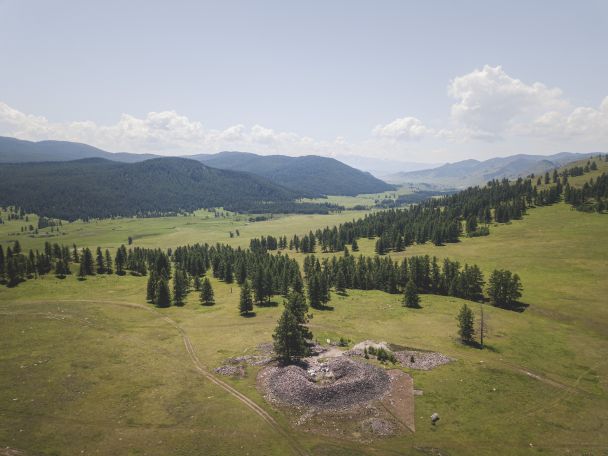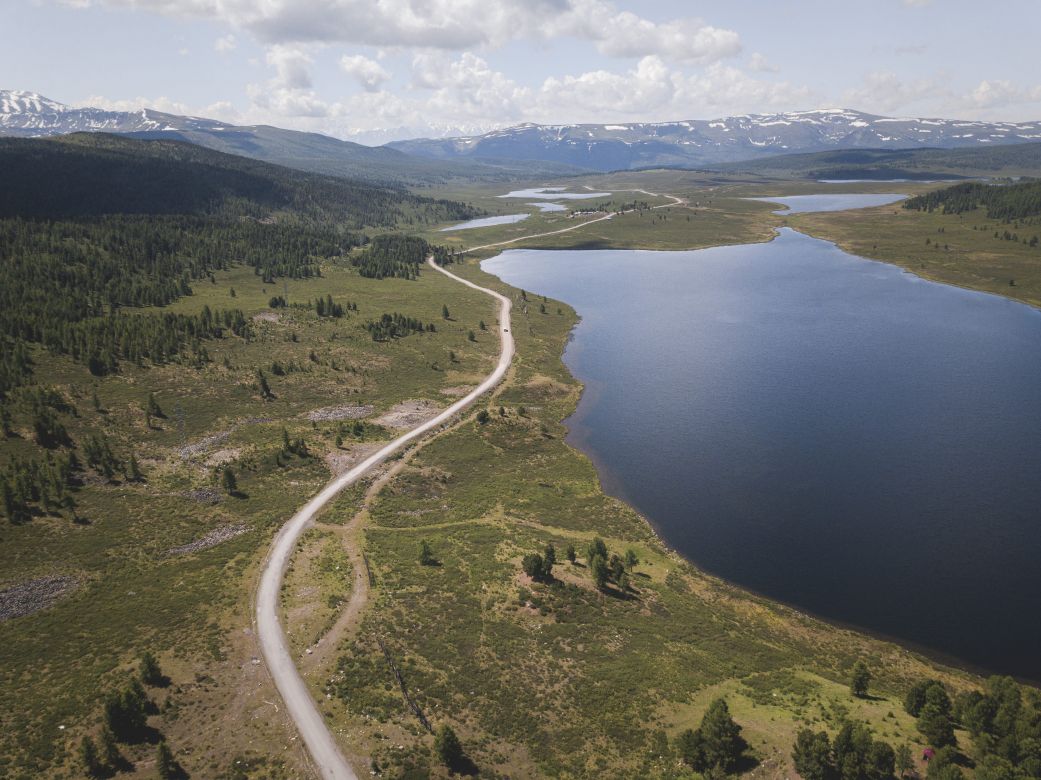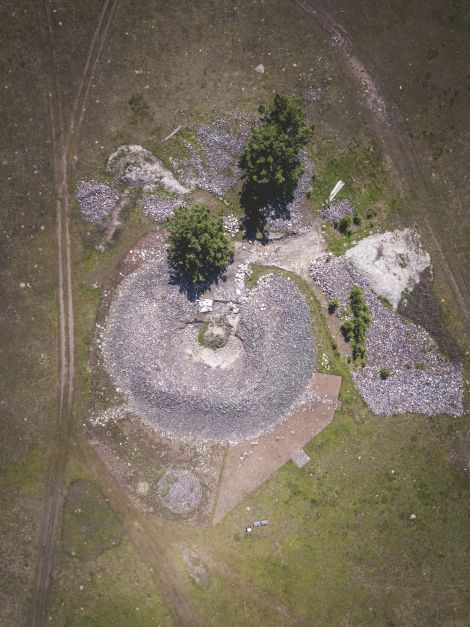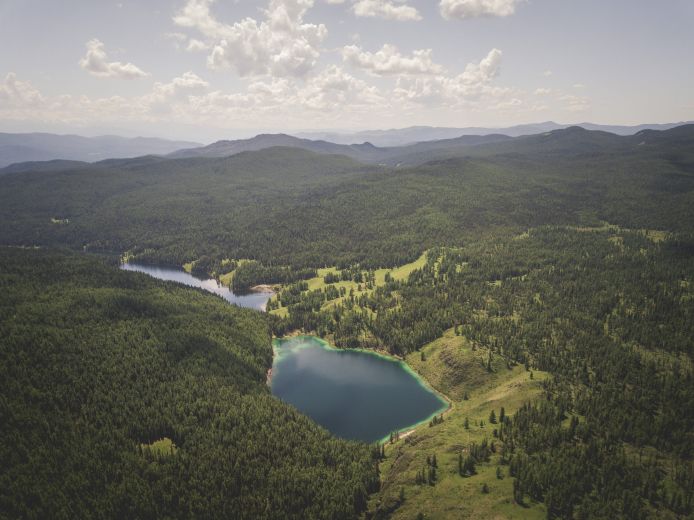Culture
Road Trips
On import phase-out and Soviet canteens, woolly yaks and wild silk, mummies with dragon tattoos, and life without electric energy.
The Ulagan Plateau is like a piece of Switzerland or the Lake District – pick one – sequestered amidst the Altai highlands. Here, surrounded by alpine meadows alternating with taiga and tundra, are scattered several dozen scenic lakes: Lake Balyktukel and Lake Sorulukel, Lake Uch-Kohl and Lake Cheybek-Kohl (Dead lake), and the breathtaking Lake Kidelu. It is this place that fans of visual effects religiously flock to for panoramic photos. Especially in the autumn, when larches explode in a blaze of dramatic gold against the backdrop of eternal snow. In the summer, your head will spin amongst the undiluted colours of meadow flowers – irises of fluorescent purple, dense lilac oregano, flaming orange Trollius, and vulgarly mauve thyme.
The Altai colour palette knows no undertones or subtlety of pastels.
These landscapes are so conducive to practising the art of leisurely contemplation at any time of year that it would be a sin not to spend a day or two in this dreamy languor. Those perpetually spurred on by their urban neuroticism and unable to sit still may find refuge in an abundance of fishing opportunities.
Life Hack
Visiting the kurgans without a guide is quite risky – both in terms of safety and in terms of reverence towards local, rather uncooperative, spirits.

Life Hack
The road to Ulagan passes through the mountains. Since its quality is considerably worse than that of the federal Chuya Highway and it consistently gets damaged by rainfall, we would advise you to cover the first part of the road at a relatively high speed to avoid stumbling over every bump. But do stop by the Red Gate – once a horse trail, today’s road across the swift Chibitka River passes through a man-made gateway in the rust-pigmented rock that owes its colour to the mixture of cinnabar, manganese, and other metal oxides.

Ulagan
Ulagan, protected by mountains from the hot dry winds of the Gobi Desert on one side, and from Siberian frosts on the other, is home to Telengits, the former nomads who have not fully mastered settled lifestyle and subsistence farming. They breed yaks, whose wool protects them from both scorching heat and severe cold, and don’t know much about electricity (they use generators and candles) – and material values, apart from yaks, mean little to nothing to them. If you can, join them for dinner in a yurt, overflowing with horse meat, vodka, and kumis. And pay close attention to the throat singing – about the Princess of Ukok who keeps vigil to protect this realm from evil that may escape from the underworld.
You can get lunch at a shabby-looking cafe (that resembles a Soviet canteen) by the town hall – their food is surprisingly good.


Life Hack
If sometimes you are forced to overlook your ideas of beauty (and comfort) for the sake of a decent lunch in Altai, drinking water will not be an issue – here you can safely drink from any mountain spring. And it will taste amazing.
The Pazyryk Burials
On the right bank of the Bolshoy Ulagan River, on the way from Ulagan to Balyktuul, lies another of Altai’s exciting attractions (the first one being the petroglyphs of Kalbak-Tash) – the Pazyryk burials. These are the long barrows of tribal chieftains dated to the 5th-2nd centuries BC and built by the Pazyryk peoples. Genetically proven to be the ancestors of the modern Altaians, these Iron Age nomads lived in small communities that were part of bigger clans, tribes and tribal unions. They settled in log dwellings with a hearth at the centre, bred cattle, engaged in arts and crafts (felting, for example), ate horse meat and sour dried cheese, and drank kumis. In general, they were quite a nice crowd that left behind an incredible legacy.
The memorial burial complex consists of five gigantic (the mounds vary in diameter: from 24m to 47m, and in height: from 1.5m to 4m) royal tumuli from the Scythian times. They are called royal because of the anthropological and material luxury of the objects discovered inside. The uniqueness of the Pazyryk burials is in the presence of permafrost inside, which helped to preserve utensils and decorations of intricate craftsmanship, musical instruments and Persian rugs, a chariot and elaborate bronze horse harnesses, wild silk garments and tattooed mummies. You can carefully examine all the treasures excavated from the burial mounds in the State Hermitage Museum in Saint Petersburg – as soon as it opens, that is.




 7 min
7 min